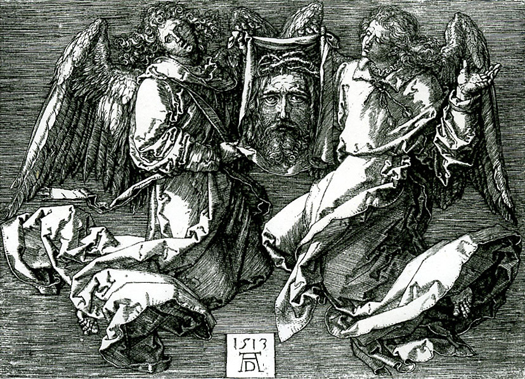Idol Anxiety
April 8 – November 2, 2008

Albrecht Durer, Sudarium Displayed by Two Angels, 1513, Engraving on cream laid paper. Smart Museum of Art, University of Chicago, Gift of Mr. and Mrs. Richard L. Selle, 1979.1.
Idols are worrisome objects.
From ancient times to the present day, theological traditions have reflected on idolatry and questioned the transcendence, significance, and power of objects. Different anxieties have produced different artistic practices.
This exhibition navigated a variety of theological and secular perspectives in order to explore the complex relationships between objects of worship, their makers, and their audiences.
For example, in ancient Mesopotamia, a cult statue was installed in the temple only after an elaborate ritual in which artisans proclaimed not to have made the idol while presenting their hands to be symbolically chopped off. Finding such ritual denials ineffective, the Bible's second commandment—make no graven images—deemed all object worship idolatrous. Alternatively, some Christian theologians embraced representations of Christ and contended that such images were valid because Christ himself was the word made flesh.
By juxtaposing Mesopotamian cult figures with Classical antiquities and Renaissance paintings,Idol Anxiety examined how objects become idols and offered insight into the sometimes uneasy relationship between people and things.